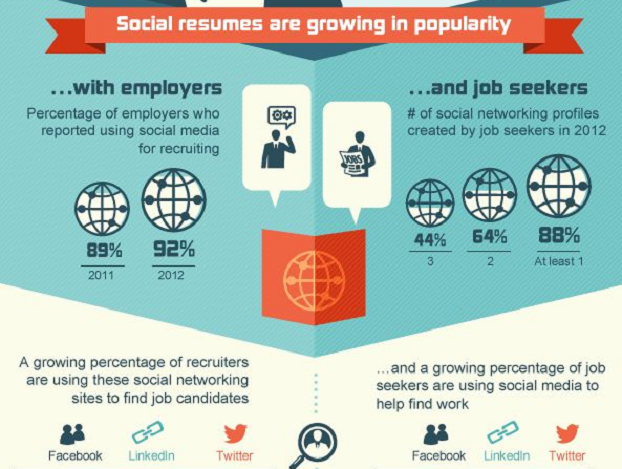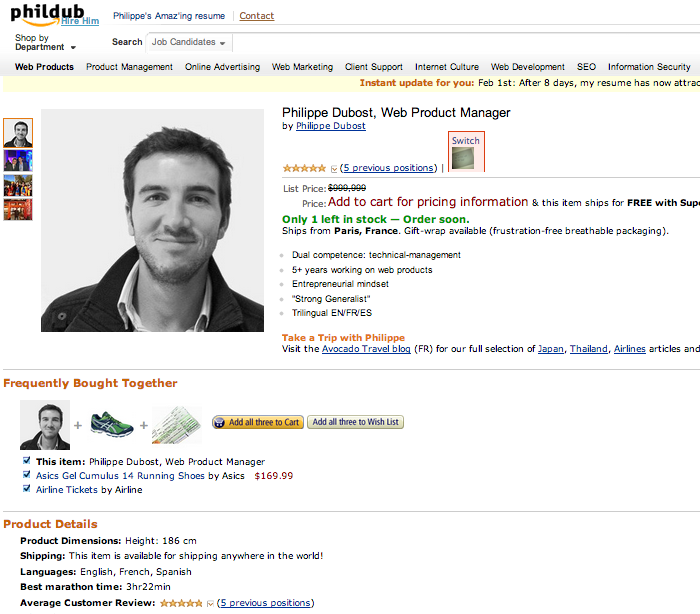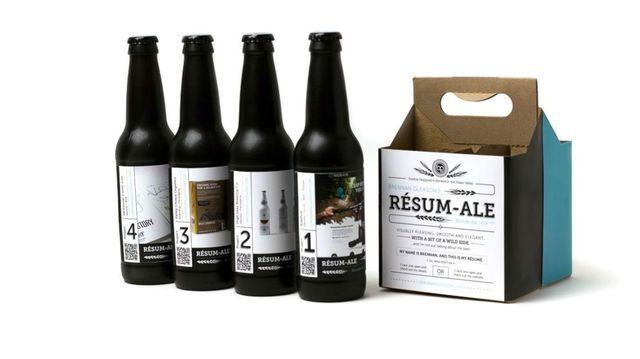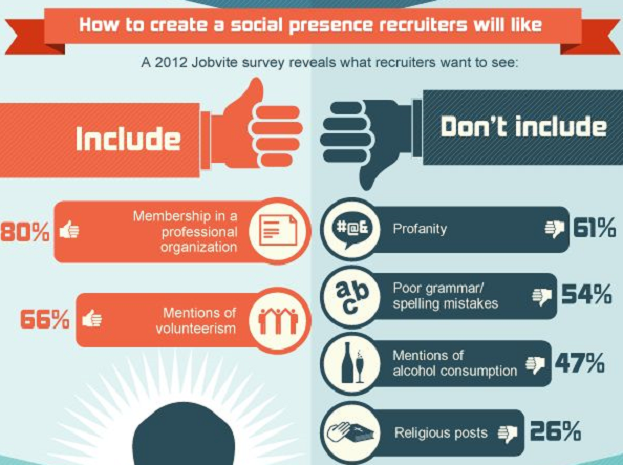Tips for Creating a social CV Online
By Joshua Neil
It doesn’t need to be said that it’s hard to get a job at the moment- even with the best job-hunting techniques out there, it can be a struggle. Whether you’ve been working for thirty years or just starting out, the competition for any work is fierce, and everyone needs a way to stand out, make employers come to them, and portray themselves on their own terms- make the most of the brand that is themselves.
That’s where a social CV (Curriculum Vitae) comes in. The idea has grown hugely in recent years- making your Facebook account, your Twitter or your website a part of your CV is now getting ever more common. With over 92% of employers now using social networking in some way to help with recruitment, it’s hard to ignore the need for an online presence. There are still ways to get jobs in London, but for those who are looking to start a social CV, fear not! Here are the five best tips for getting started on standing out from the crowd.

The statistics speak for themselves- pic source: socialtalent.co
#1 Starting to Create an Online CV
For those out there looking to create a social CV, the very first step is to create an online presence– the good news is that for most of you, this has already begun. If you have a Facebook or Twitter account, or a profile on LinkedIn, you’re already on your way to a good social CV.
Using LinkedIn
LinkedIn is the perfect place to begin- dedicated to finding employment, this site allows you to upload all your CV details, network with people in your chosen industry, and present yourself as the kind of person employers will want in their company- and best of all, with 93% of recruiters using LinkedIn to some extent when hiring, you can be sure that there are more employers than ever before actively searching for the perfect candidate, which might just be you.
Using Social Media
But that’s not all you need- smart candidates use everything at their disposal: Facebook, Twitter, or even an Amazon account (more on that below). Employers will search your social networks when reviewing you, and beyond just making sure they present you as intelligent and hard-working, you can actively sell yourself to employers– use them to show your interests, give recent job information, and even include some good references from former bosses! They can be used for job hunting too- follow companies on Twitter to see jobs they post, and use Facebook to search for jobs or contact companies or individuals you think might be able to help.
Finally, there are some fantastic sites out there for building a social CV completely from scratch. VisualCV.com allows you to build a search-engine-optimised page just for you, which will allow employers to find it much easier: it can create a unique tailored CV, matched to whichever job you’re going for, the ability to add multimedia elements to create any portfolio you like, and the ability to promote your CV online: a social CV all in one place.
#2 Make Your Own Website
The next step is to build a blog or website. Tailored to you, these can really show off your portfolio of work, as well as your creativity and even computer skills. These don’t even have to cost anything- WordPress.com is one of the most widely recommended blog building and hosting sites, and it’s very easy and free. For websites, Bravenet.com is also free, and includes a lot of useful features. While a knowledge of HTML is helpful in either case, there are dozens of easy guides out there to help you out, and the whole process is simple enough that anyone can do it.
Find a Unique URL
The next step is to create a unique URL for your website or blog- in either case, get one which is memorable, easy to find and sells the ‘you’ brand– it’s recommended to purchase your name as a domain, or failing that something that will come up if an employer searches for your name or your field of expertise. Many of the paid website or blog hosts offer free domain names with their service, so it may be an idea to look at these as well as the free sites.
Make a ‘You’ Brand
Now that you have a site of your own, you can create a brand and a social CV like never before- with more room to be creative, there are no limits to how you can sell your skills. Multimedia is hugely useful here- audio from bosses and colleagues selling your strong points, video summaries answering common interview questions, as well as a portfolio of your work, are all great ways to put yourself across to any employer who finds the page. This can be a one-stop shop for all things you, showing off exactly what you want employees to see, without the worries that generally come with social networking sites like Facebook.
#3 Be Creative
This follows on from the last point- it pays to be creative. Online you can be more creative than you ever could on paper- with pictures, videos and audio notes all at your fingertips, you can create a website, blog or networking page which will catch an employer’s eye, hold their attention, and impress them enough to give you the job.
Think Outside the Box
But it doesn’t just have to stop there- thinking outside the box works wonders for anyone brave enough to try it. Don’t just limit yourself to a website, Facebook or Twitter- think of new ways to impress. Recent examples include a man who sold himself on Amazon– with reviews from colleagues and bosses- and even someone who made his own ale- ‘resume-ale’- to give to employees to show off his creative marketing side.
While you don’t have to start a brewery just to get noticed, these are perfect examples of how you can stand out from the crowd and get ahead- think of what you do best, and apply it in a new and original way. Anything that makes employers look at your CV is a good thing.
#4 The Rules of a Curriculum Vitae
Though creativity and unique thinking are key to a social CV, what can’t be forgotten are the very basics of searching for a job– the fundamentals of CV building. While it helps to use multimedia on your website or use interesting colour and style to get your CV out there, remember what it is that makes a CV good- let employers know who you are, what your skills and proficiencies are, what work experience you have and how you plan on helping your new company.
Making a Professional CV
Finally, remember to be professional, smart and dedicated, in every aspect- keep your site and information concise and neat, you don’t want readers to get bored. Always check spelling and grammar on everything you do, and make sure the points you’re making are clear. If you’re including Facebook or Twitter on your social CV, it’s vital that they’re up to scratch- no pictures of you drunk or swearing, and only posts that cast you in a positive, professional light. Remember that no matter how creative and unique you want to appear, your employer is still looking for someone they can rely upon to try their hardest in a work environment, and give the company a good name.
#5 Share Your Social CV
Now that the full social CV is set up, the final step is to begin sharing it with the world. Crosslinking all your networks is an excellent idea, as any potential employer now has a much better chance of seeing your full body of work, instead of just stumbling onto your Facebook page and nothing more. Linking a website or blog with your Facebook, Twitter, LinkedIn or Youtube profiles can allow an employer a much better idea of you and your talents: the longer you can get him to stay interested in you, the better your chance of landing the job.
Share This
If your CV is up on your website or blog, a good way of getting it out there is to make it shareable– using sharing utilities such as Share This or Add This, which embed sites like Reddit, Digg and Delicious all at once, are great for that, and not only show an employer that you are willing to put your CV out there and aim high, but that you have tech skills as well. You can also include a link in your email signature, getting the link to anyone you speak to.
For those with the digital savvy, a social CV can make you stand out from the crowd, show your creativity and professionalism, and get your portfolio out to potential employers. While it can take a lot of time and effort to perfect, this will pay off in a big way with increased employer interest and job offers, and in the end you’ll be glad you did.
For real-time updates from each company, see their Twitter accounts below:
VisualCV: @visualcv
WordPress: @WordPress
Bravenet: @bravenet
—
For more ideas on how to make a creative CV, take a look at The 30 Most Innovative CVs.









